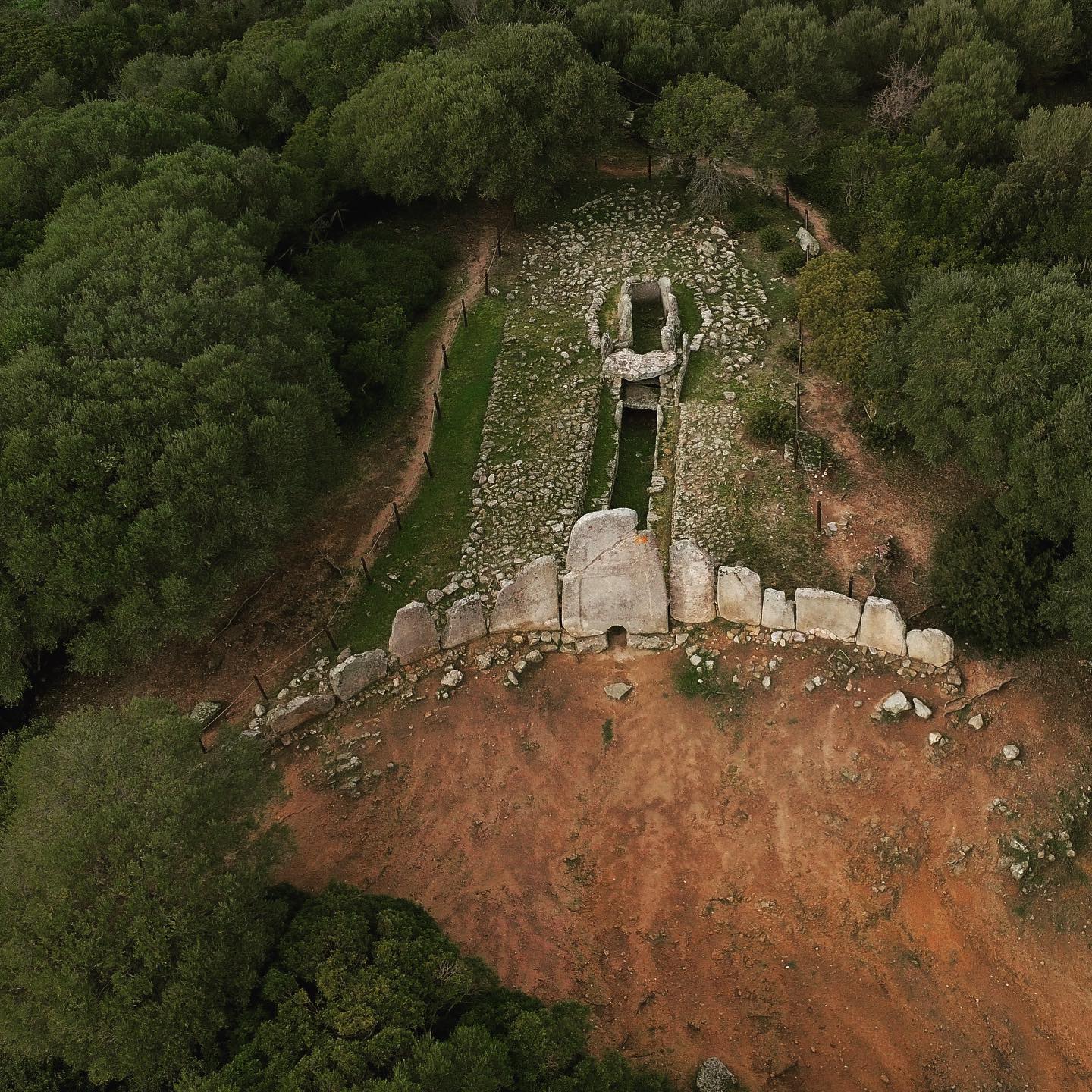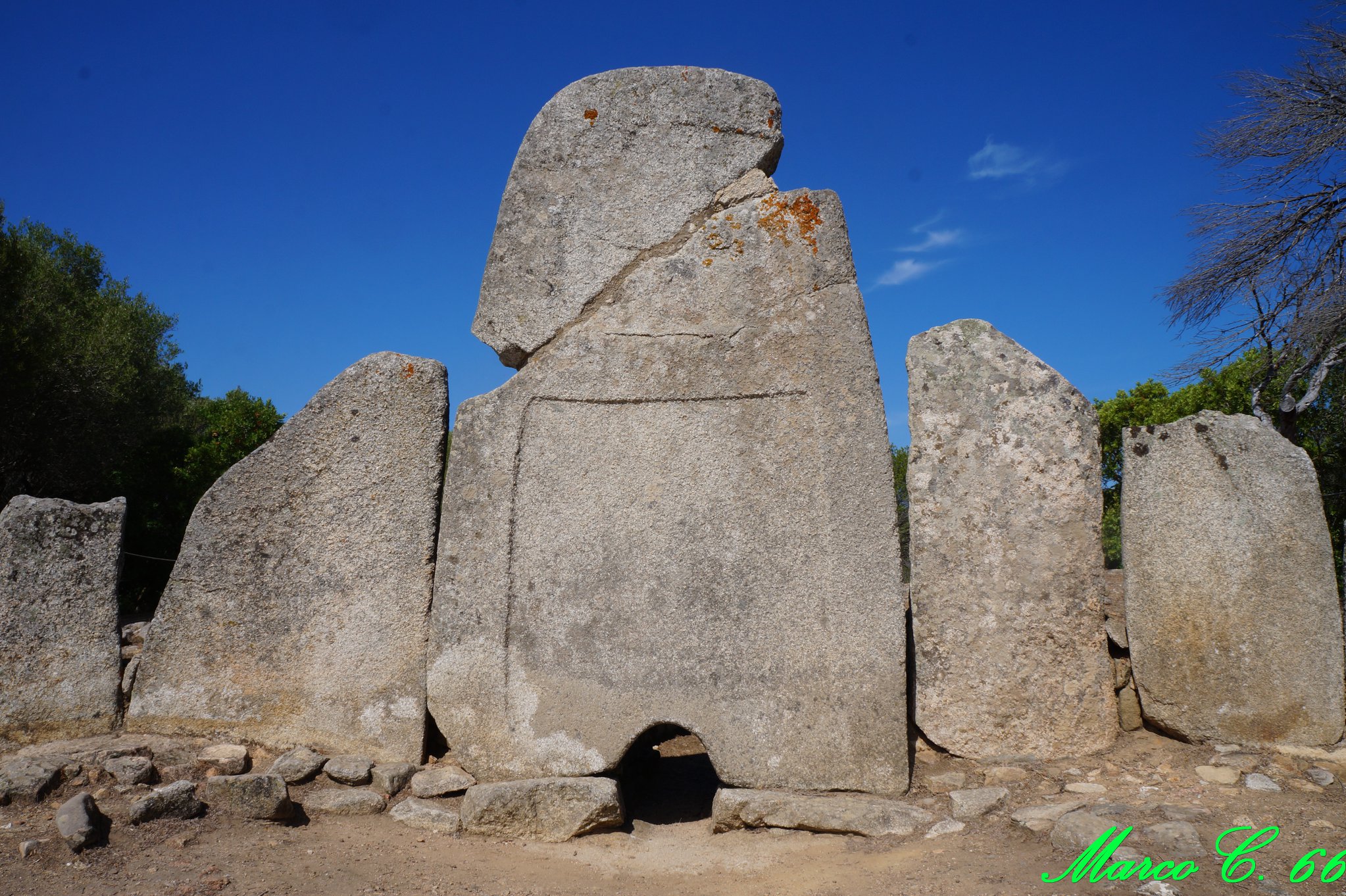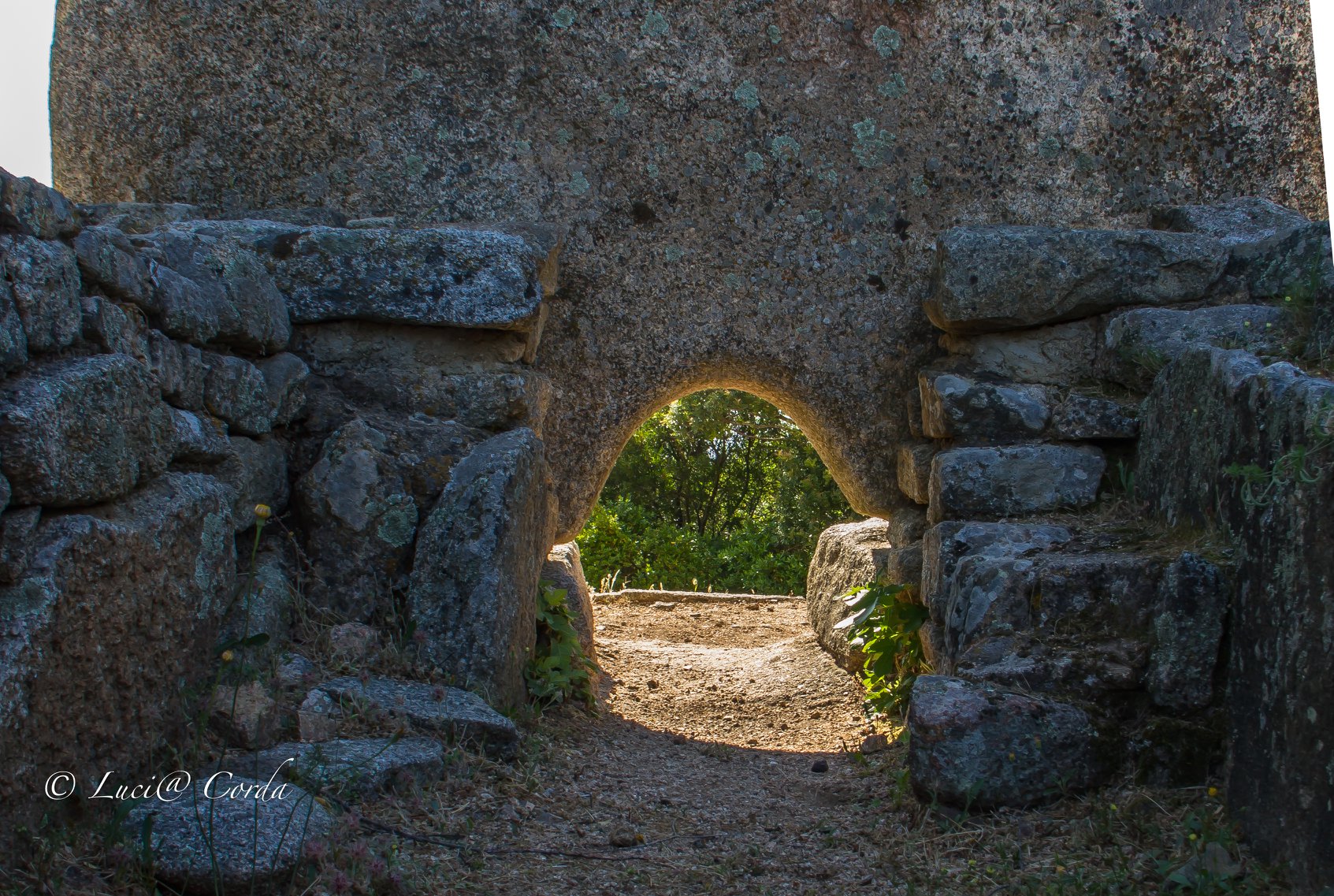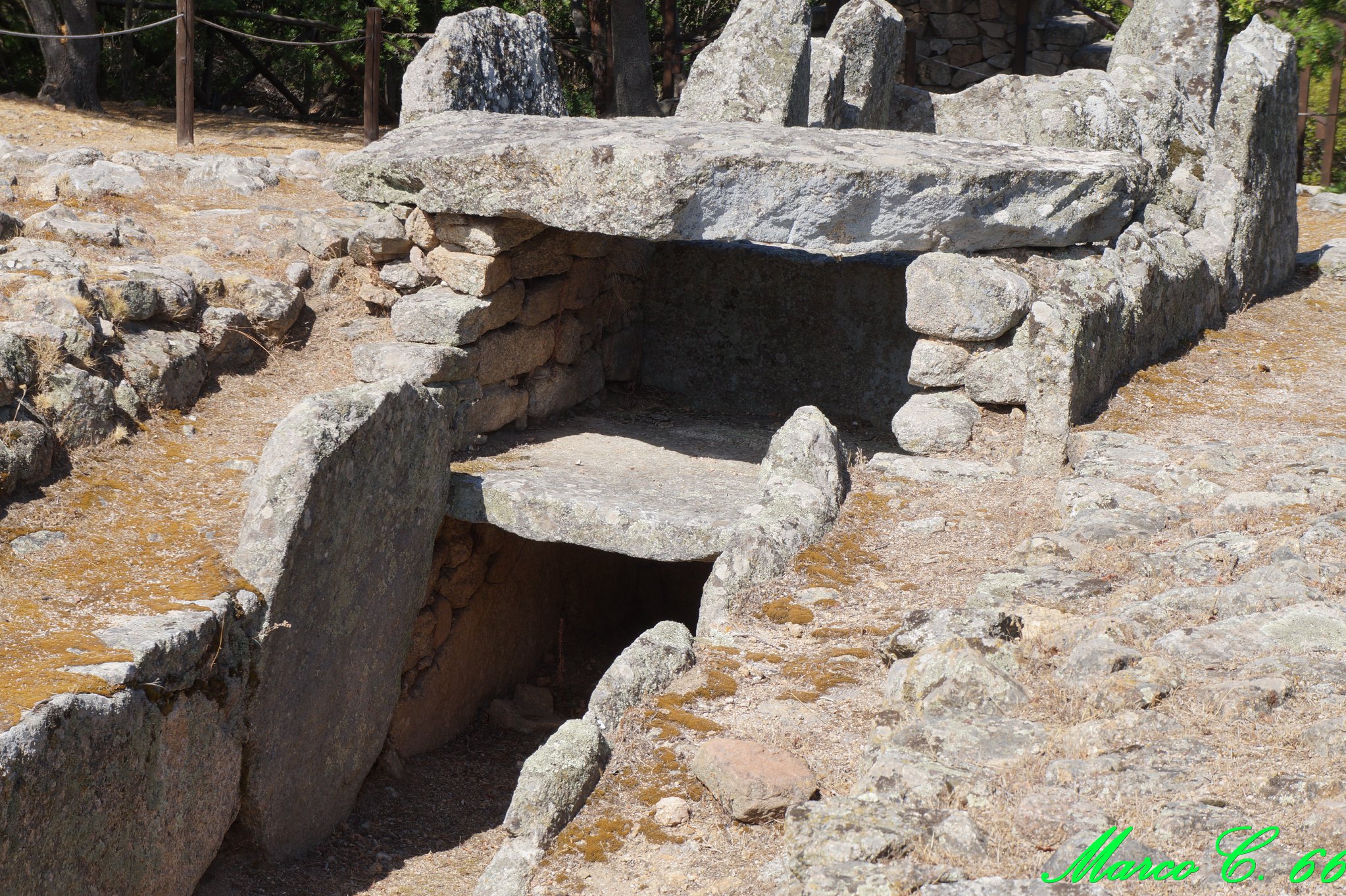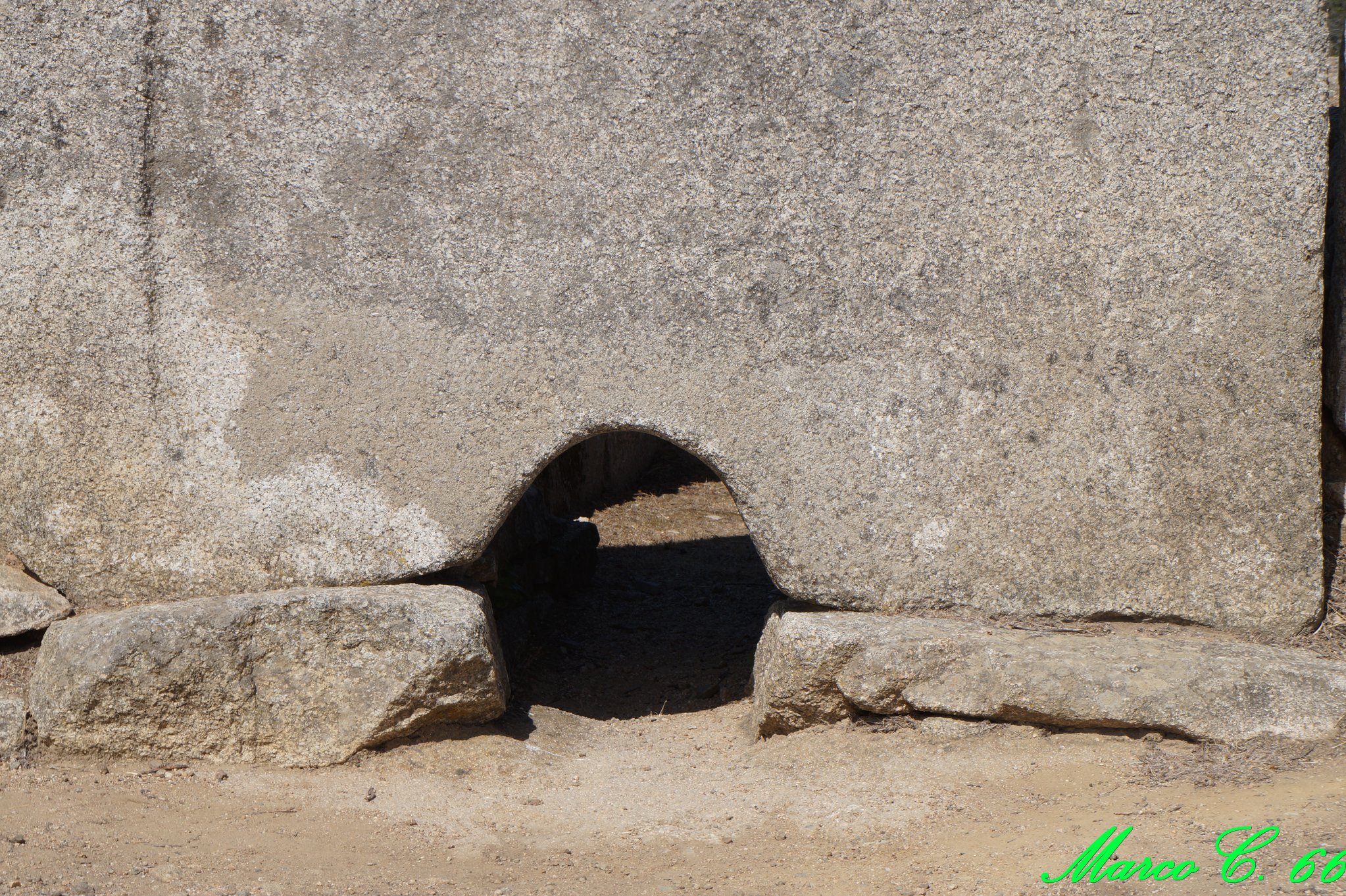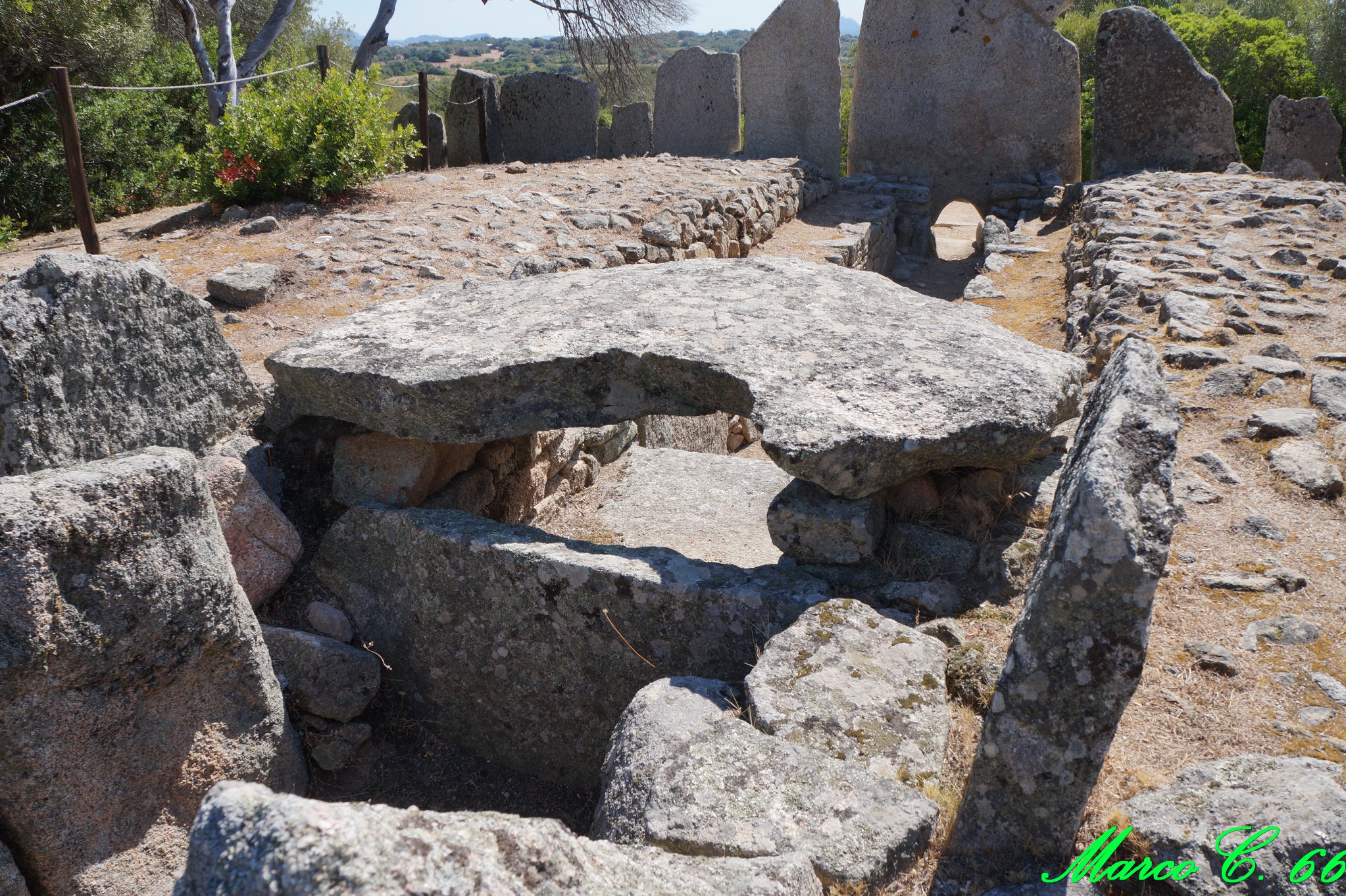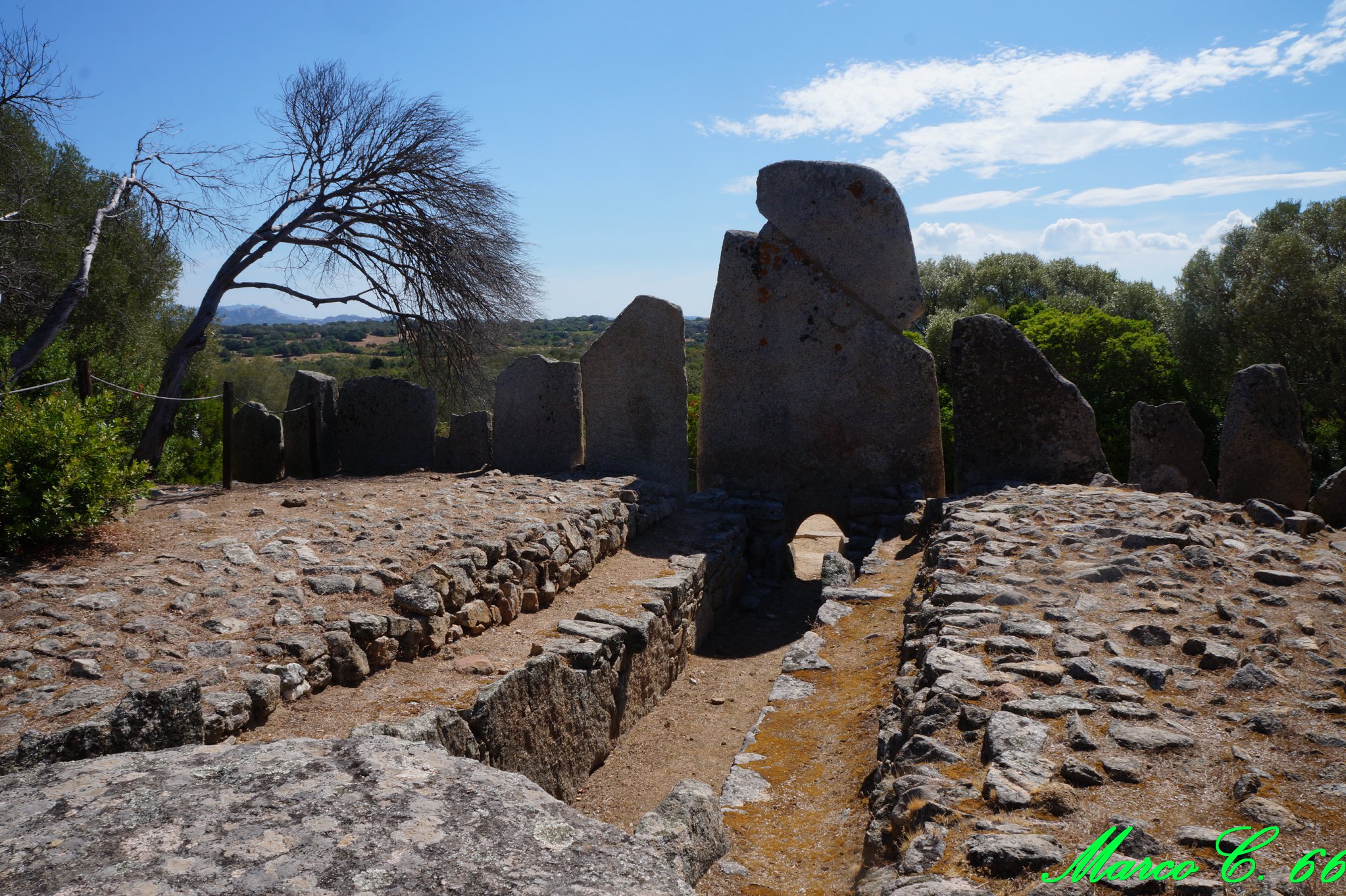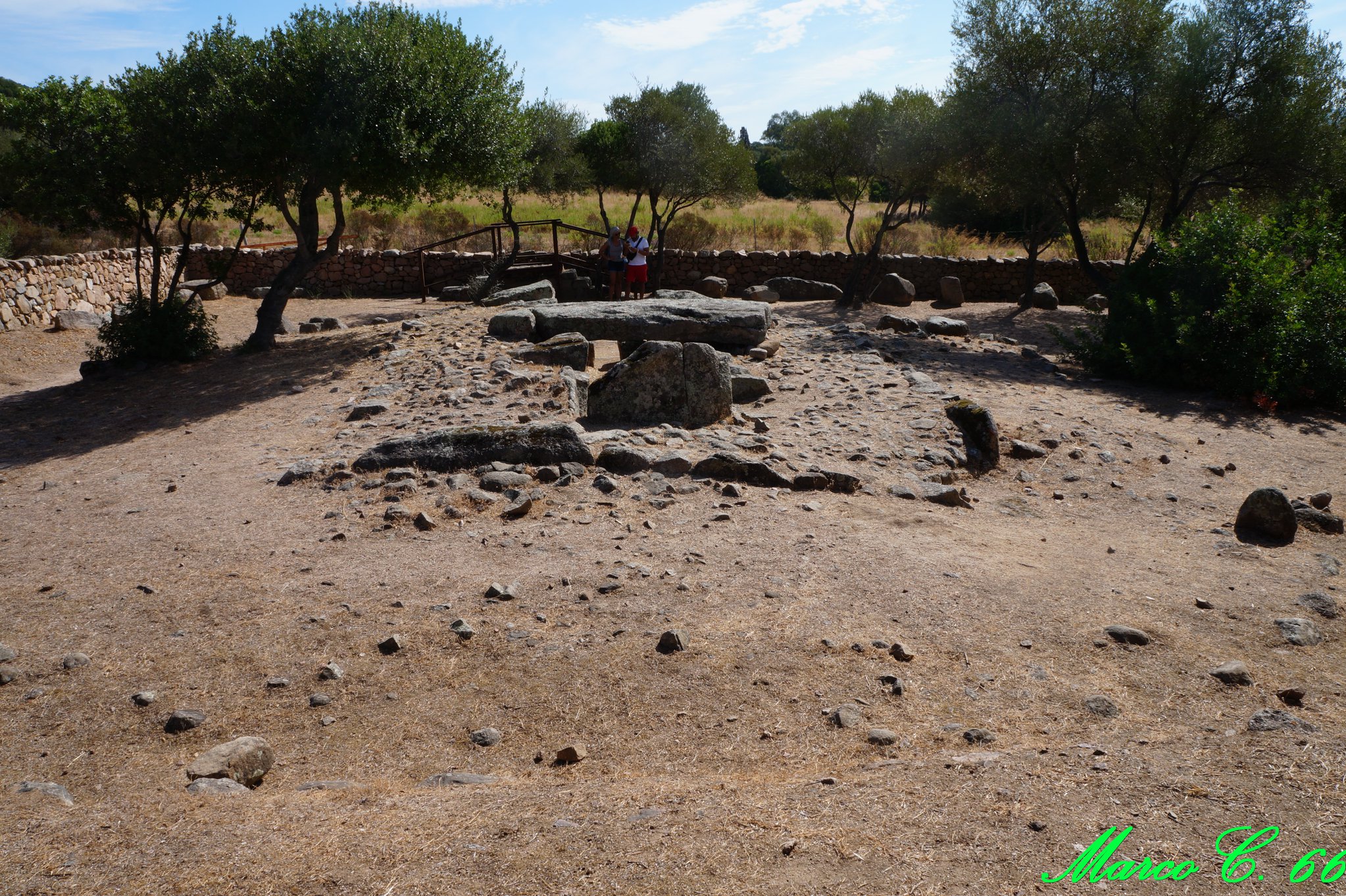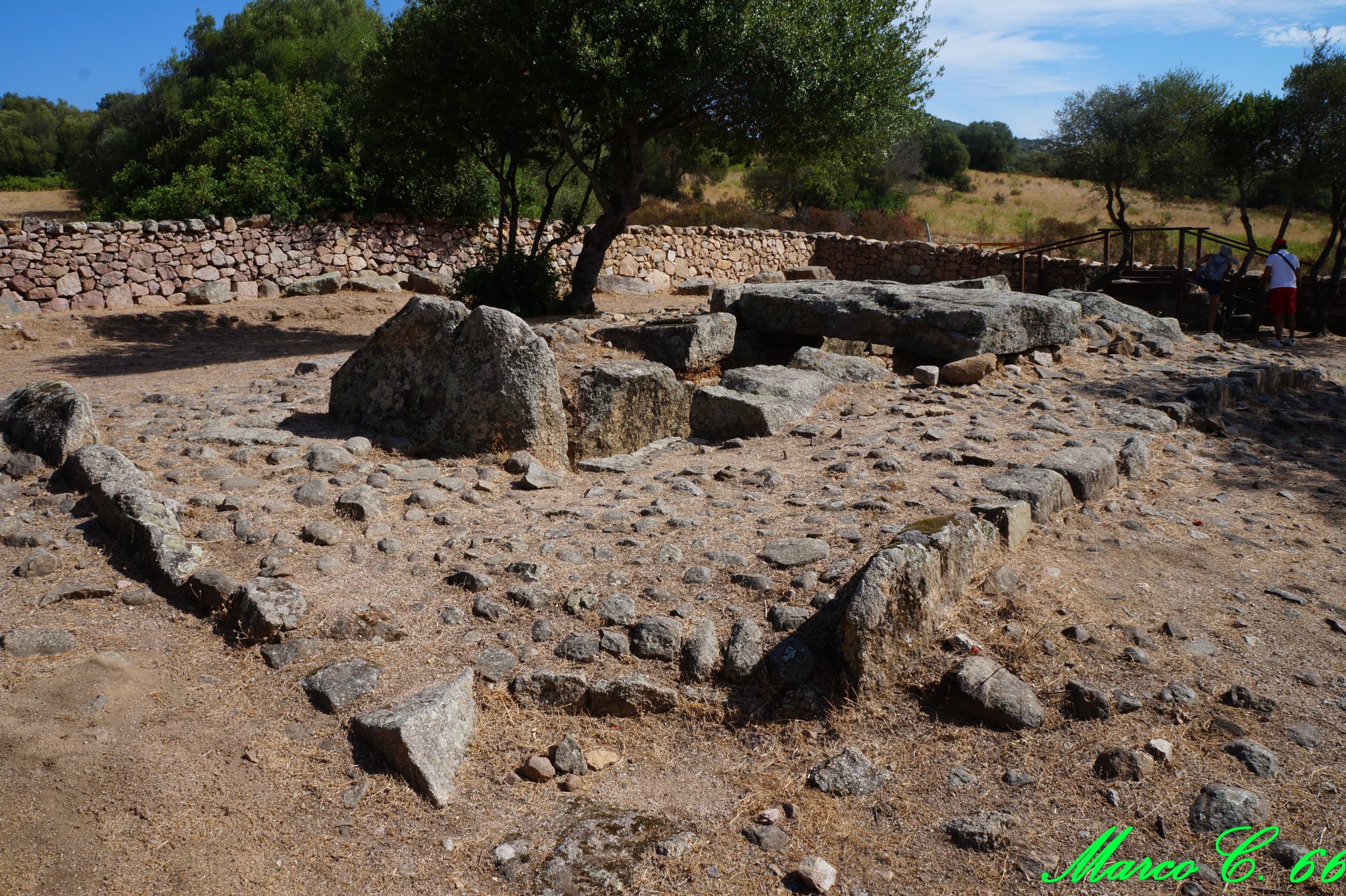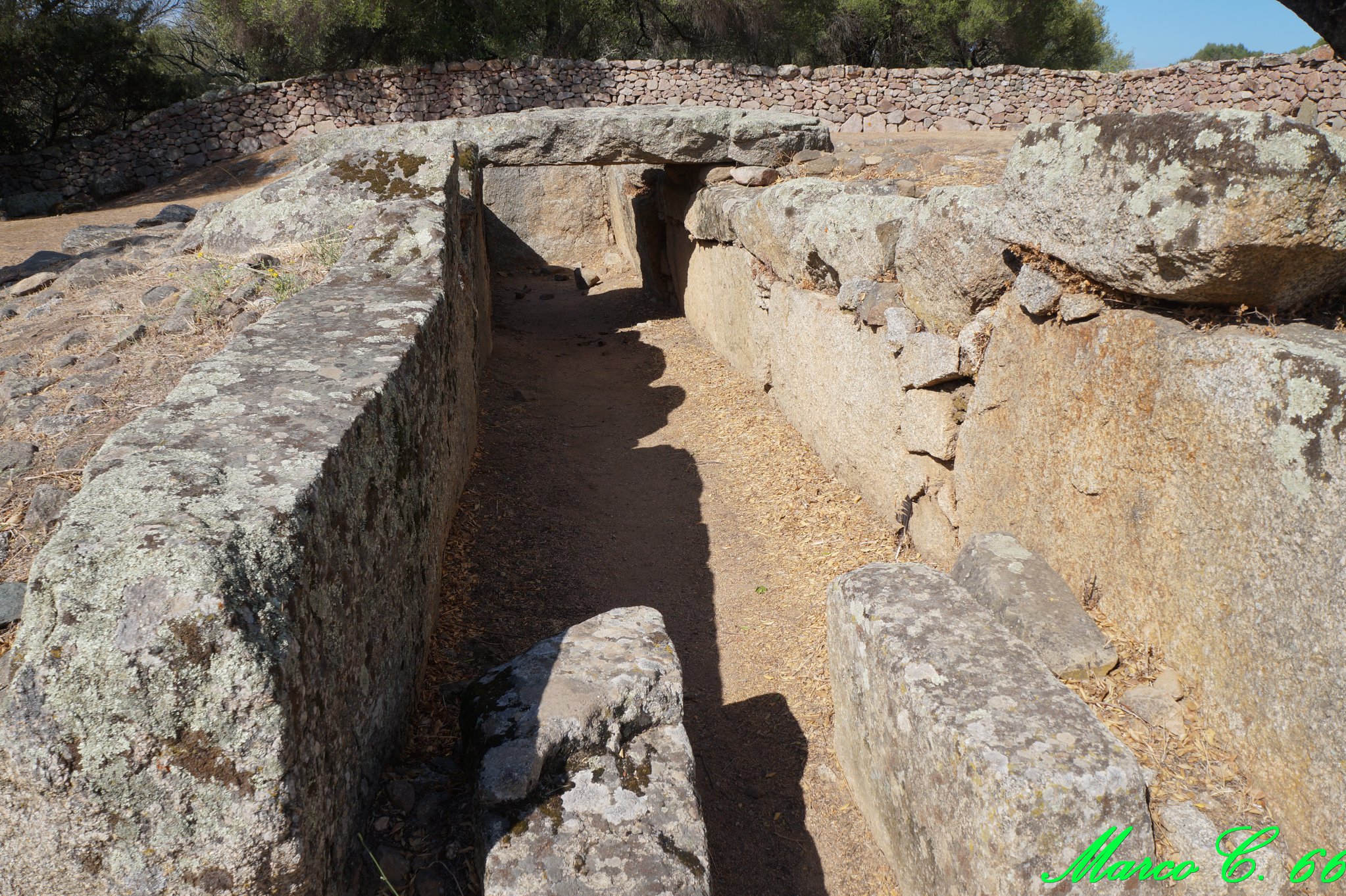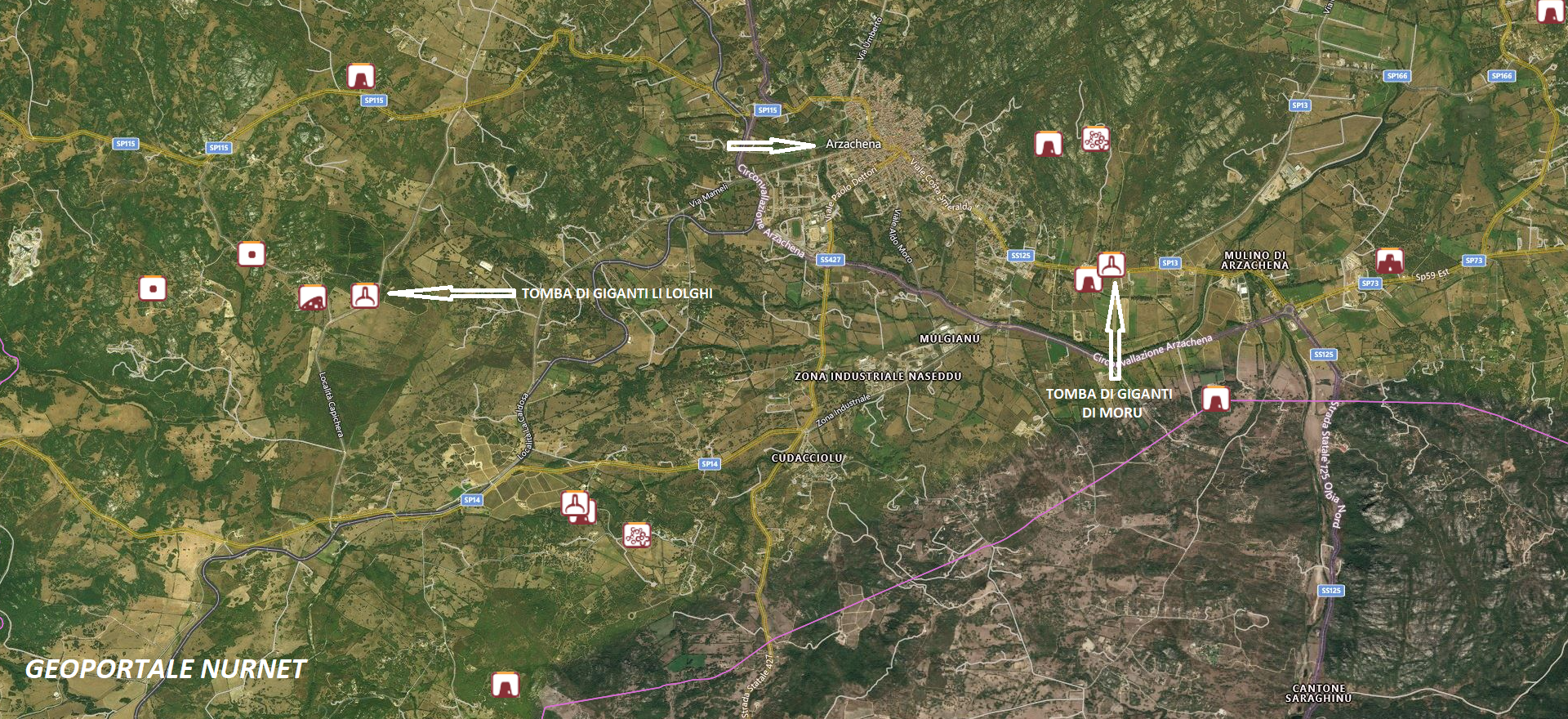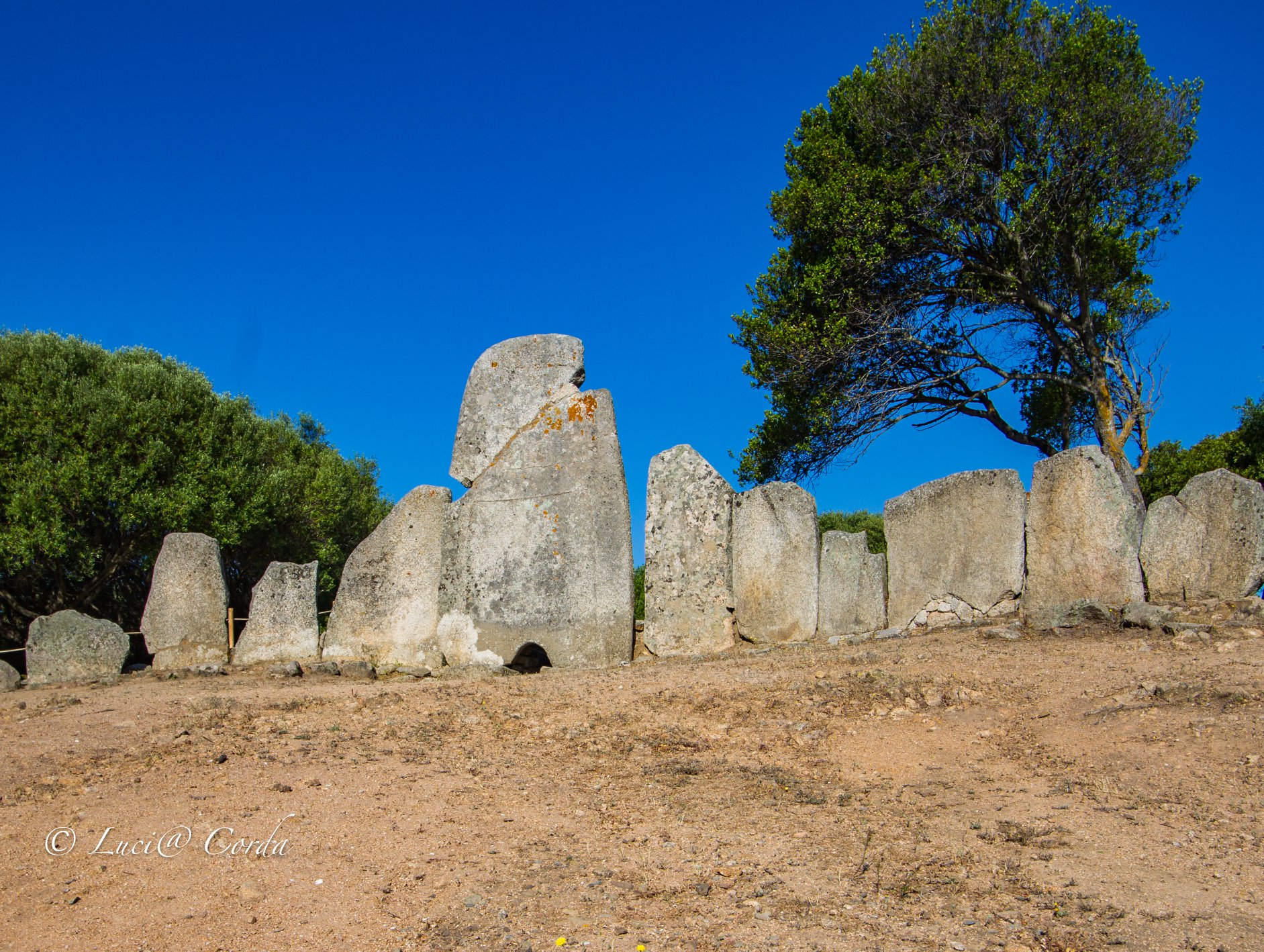1c: The tomb of giants de Li Lolghi (Arzachena) was built in several phases. The first dates back to the early Bronze Age, during the period when the Bonnanaro culture was widespread in Sardinia (around 1800 B.C.). At that time, the tomb must have appeared as a cist grave, covered by a mound. In the Nuragic era, the site was reconfigured into a tomb of giants with the expansion of the burial chamber and the construction of the exedra, made up of 14 slabs, among which stands out the central stele, equipped with an entrance nearly 4 meters high. The tomb of giants of Moru (Arzachena), dating back to the 13th century B.C., is related to Nuraghe Albucciu. In this tomb, the rectangular body, made of flat slabs, is surrounded by a mound of stones. The exedra is reduced to a series of blocks and small slabs that deprive the monument of the grandeur that characterizes other megalithic burials. Notable is the wall thickness of the tomb, about 6 meters. The structure has undergone modifications in different eras and has been reused several times. The photos of the tomb of giants de Li Lolghi are by Marco Cocco. Those of the tomb of giants of Moru are by Lucia Corda, Marco Cocco, and Francesco Giorgioni Sardo.